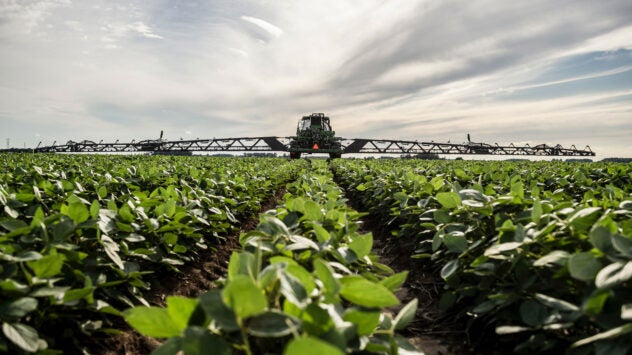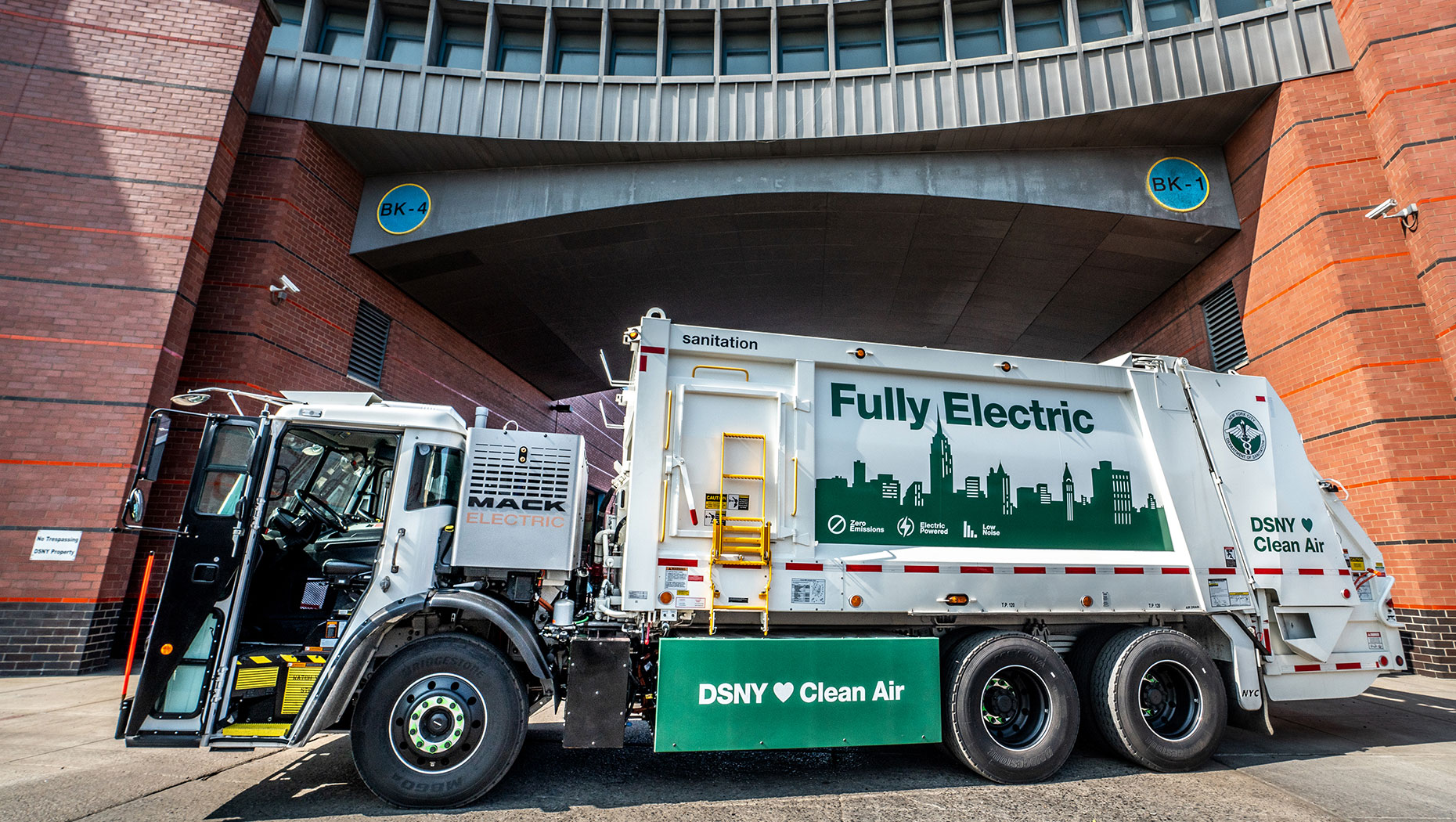Report on the 45Z Clean Fuel Production Credit Amendments and Implications for Sustainable Development Goals
Recent legislative amendments to the 45Z Clean Fuel Production Credit, enacted through the One Big Beautiful Bill Act (OBBBA), have significant implications for the United States’ progress toward several key Sustainable Development Goals (SDGs). This report analyzes the changes and their potential impact on clean energy, climate action, and sustainable agriculture.
Legislative Updates and Contribution to SDG 7: Affordable and Clean Energy
The 45Z tax credit, established by the 2022 Inflation Reduction Act, is a primary mechanism for incentivizing the production of low-emission transportation fuels, directly supporting the objectives of SDG 7 (Affordable and Clean Energy). The OBBBA has extended the credit’s availability from its original 2027 expiration to 2029. This extension provides a more stable and predictable investment climate for biofuel producers, encouraging long-term capital allocation into clean fuel technologies and infrastructure.
Carbon Intensity Framework and Alignment with SDG 13: Climate Action
The core of the 45Z credit is its focus on reducing greenhouse gas emissions, a central tenet of SDG 13 (Climate Action). The credit amount is directly tied to a fuel’s Carbon Intensity (CI) score, calculated using the Department of Energy’s 45ZCF-GREET model, which assesses emissions throughout the entire lifecycle from feedstock cultivation to final fuel use.
Key Policy Revisions Under OBBBA
The OBBBA introduced several revisions to strengthen the policy’s environmental integrity and domestic focus:
- Exclusion of indirect land use change from CI calculations.
- A mandate that feedstocks must originate from North America.
- A requirement that fuels be produced by U.S.-controlled entities.
- Elimination of previous premiums for sustainable aviation fuel.
- Enhanced credits for small-scale producers.
These changes aim to ensure that the tax credit genuinely rewards verifiable emissions reductions and supports domestic industries, thereby advancing national climate targets.
Impact on Agriculture and SDG 12: Responsible Consumption and Production
The updated policy creates a direct link between the energy sector and sustainable agricultural practices, fostering the principles of SDG 12 (Responsible Consumption and Production). While farmers do not receive the credit directly, a significant increase in demand is projected for agricultural feedstocks.
- Increased Demand: The USDA projects that by 2025, 35% of U.S. corn will be used for ethanol and over 50% of soybean oil will be directed to biofuel production.
- Sustainable Sourcing Requirement: To qualify for higher tax credits, fuel producers must source feedstocks cultivated using low-carbon farming methods. This incentivizes a shift toward more responsible production patterns in the agricultural supply chain.
Promoting Sustainable Farming and Addressing SDG 15: Life on Land
The mandate for low-carbon feedstocks directly promotes agricultural practices that support SDG 15 (Life on Land), which focuses on protecting and restoring terrestrial ecosystems. To lower the CI score of their final product, fuel producers will need to source from farms implementing practices such as:
- No-till farming
- Use of cover crops
- Application of nutrient-efficient fertilizers
These conservation methods improve soil health, reduce erosion, and enhance biodiversity. This creates a market-based incentive for farmers to adopt practices that contribute to climate resilience and ecosystem health. However, analysis from the American Farm Bureau Federation indicates that these practices may come with costly certification requirements and operational constraints for farmers.
Implementation Challenges and Future Outlook
Significant challenges remain in realizing the full potential of the amended 45Z credit. The successful integration of sustainable agriculture into the clean fuel supply chain is contingent upon overcoming several barriers.
Current Adoption Rates of Conservation Practices:
- Cover Crops: ~5% of U.S. cropland
- Reduced Tillage: ~25% of U.S. cropland
- No-Till: ~28% of U.S. cropland
The low adoption rates highlight a critical gap. For the policy to succeed, clear guidance from the Department of Treasury, IRS, and USDA is required. Furthermore, robust financial mechanisms, such as crop premiums or direct credit pass-throughs, must be established to ensure that farmers are adequately compensated for their investment in sustainable practices. Without these assurances, the expansion of eligible feedstock acreage is likely to be slow, limiting the policy’s overall effectiveness in advancing the interconnected goals of clean energy, climate action, and sustainable land management.
1. Which SDGs are addressed or connected to the issues highlighted in the article?
SDG 7: Affordable and Clean Energy
- The article’s central theme is the “45Z Clean Fuel Production Credit,” a financial incentive designed to “encourage the production of low-emission fuels.” This directly supports the goal of increasing the availability and use of clean energy sources like biofuels.
SDG 13: Climate Action
- The policy’s objective is to reduce emissions by promoting cleaner fuels. The article highlights the use of a “Carbon Intensity (CI) score” to measure emissions “from field to fuel tank,” which is a direct measure aimed at mitigating climate change.
SDG 2: Zero Hunger
- The article discusses the impact on agriculture, specifically the requirement for feedstocks to be grown using “low-carbon farming practices — like no-till, cover crops, and nutrient-efficient fertilizers.” This connects to the goal of promoting sustainable agriculture and resilient farming practices.
SDG 9: Industry, Innovation, and Infrastructure
- The tax credit extension aims to give “biofuel producers more time to invest in clean fuel technology.” This promotes innovation and the upgrading of industrial processes to be more environmentally sound and sustainable.
SDG 12: Responsible Consumption and Production
- The policy encourages a shift in production patterns towards low-emission fuels and sustainable agricultural inputs. It aims to create a more sustainable supply chain by linking fuel production with on-farm conservation practices and cracking down on “credit abuse, such as imported used cooking oil misclassified for higher payouts.”
2. What specific targets under those SDGs can be identified based on the article’s content?
SDG 7: Affordable and Clean Energy
- Target 7.2: “By 2030, increase substantially the share of renewable energy in the global energy mix.” The article directly addresses this by discussing policies that incentivize the production of biofuels from corn and soybeans, thereby increasing their share in the U.S. fuel supply.
- Target 7.a: “By 2030, enhance international cooperation to facilitate access to clean energy research and technology… and promote investment in energy infrastructure and clean energy technology.” The article mentions that the 45Z credit gives “biofuel producers more time to invest in clean fuel technology.”
SDG 13: Climate Action
- Target 13.2: “Integrate climate change measures into national policies, strategies and planning.” The “One Big Beautiful Bill Act” and the “Inflation Reduction Act” are examples of national policies that use financial mechanisms (tax credits) to achieve climate goals by reducing fuel emissions.
SDG 2: Zero Hunger
- Target 2.4: “By 2030, ensure sustainable food production systems and implement resilient agricultural practices…” The article explicitly states that to qualify for higher credits, feedstocks must come from farms using practices like “no-till, cover crops, and nutrient-efficient fertilizers,” which are key components of sustainable and resilient agriculture.
SDG 9: Industry, Innovation, and Infrastructure
- Target 9.4: “By 2030, upgrade infrastructure and retrofit industries to make them sustainable, with increased resource-use efficiency and greater adoption of clean and environmentally sound technologies…” The entire premise of the 45Z credit is to incentivize fuel producers to adopt cleaner technologies and processes to lower their Carbon Intensity (CI) scores.
3. Are there any indicators mentioned or implied in the article that can be used to measure progress towards the identified targets?
Indicators for SDG 7 & 12
- Share of biofuels in the agricultural economy: The article provides specific projections that can be used as indicators: “USDA projects 35% of U.S. corn in 2025 will go to ethanol, while over 50% of soybean oil will be used in biofuels.” Tracking these percentages measures the growth of renewable energy from agricultural sources.
- Financial incentive for clean fuel: The value of the tax credit, “ranging from 20 cents to $1 per gallon,” serves as an indicator of the economic support being provided to promote clean fuel production.
Indicators for SDG 13 & 9
- Carbon Intensity (CI) Score: The article identifies the “45ZCF-GREET model” used to assess emissions and assign a CI score. This score is a direct, quantifiable indicator of the environmental performance of the fuel production process. The article notes, “The lower the CI score, the higher the credit.”
Indicators for SDG 2
- Adoption rate of sustainable farming practices: The article provides baseline data that can be tracked over time to measure progress. It states the current low adoption rates: “Cover crops: ~5% of cropland,” “Reduced tillage: ~25%,” and “No-till: ~28%.” An increase in these percentages would indicate progress towards Target 2.4.
4. Table of SDGs, Targets, and Indicators
| SDGs | Targets | Indicators |
|---|---|---|
| SDG 7: Affordable and Clean Energy | 7.2: Increase the share of renewable energy. 7.a: Promote investment in clean energy technology. |
|
| SDG 13: Climate Action | 13.2: Integrate climate change measures into national policies. |
|
| SDG 2: Zero Hunger | 2.4: Ensure sustainable food production systems and implement resilient agricultural practices. |
|
| SDG 9: Industry, Innovation, and Infrastructure | 9.4: Upgrade infrastructure and retrofit industries to make them sustainable. |
|
| SDG 12: Responsible Consumption and Production | 12.2: Achieve the sustainable management and efficient use of natural resources. |
|
Source: agdaily.com







